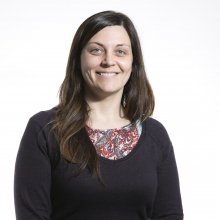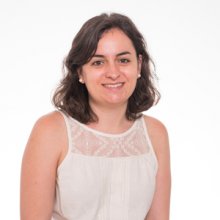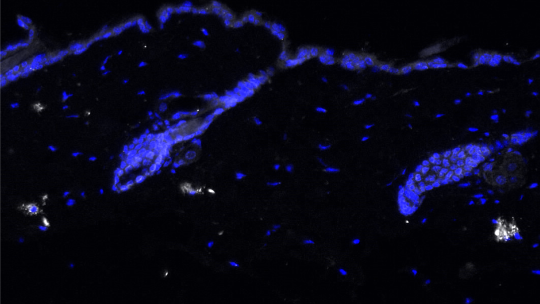Images
Participants





Contact

- A team of researchers from IRB Barcelona and CNAG identifies the IL-17 protein as a determining factor in skin ageing.
- Blocking the function of IL-17 reduces the pro-inflammatory state and delays the appearance of age-related features in the skin.
- Published in the journal Nature Aging, the work opens up new perspectives in the development of therapies to improve skin ageing health.
A team of scientists from the Institute for Research in Biomedicine (IRB Barcelona) in collaboration with the National Center for Genomic Analysis (CNAG) has discovered that IL-17 protein plays a central role in skin ageing. The study, which was led by Dr. Guiomar Solanas, Dr. Salvador Aznar Benitah, both at IRB Barcelona, and Dr. Holger Heyn, at CNAG, highlights an IL-17-mediated ageing process to an inflammatory state.
Skin ageing is characterised by a series of structural and functional changes that gradually contribute to the deterioration and fragility associated with age. Aged skin has a reduced capacity to regenerate, poor healing ability, and diminished barrier function. Published in the journal Nature Aging, this work describes the changes undergone by different types of cells with ageing and identifies how some immune cells in the skin express high levels of IL-17.
“Our results show that IL-17 is involved in various functions related to ageing. We have observed that blocking the function of this protein slows down the appearance of various deficiencies associated with ageing skin. This discovery opens up new possibilities for treating some of the symptoms or facilitating skin recovery after surgery, for example,” explains Dr. Aznar Benitah, ICREA researcher and head of the Stem Cells and Cancer laboratory at IRB Barcelona.
“Single cell sequencing has allowed us to dive deep into the complexity of cell types and states forming the skin and how these change during lifespan. We did not only find differences in the composition of aged skin, but also changes in cell activity states. Particularly immune cells showed specific age-related profiles, which we could pinpoint by analyzing thousands of individual cells on at a time,” says Dr. Holger Heyn, head of the Single Cell Genomics laboratory at CNAG.
Immune cells, inflammation, and ageing
In addition to a wide variety of epithelial cells, hair follicle cells, and other components, the skin is also home to immune cells, which play a crucial role in preventing infection and protecting against different damages.
The study describes how, during ageing, the presence of some of these immune cells, namely gamma delta T cells, innate lymphoid cells, and CD4+ T cells, significantly increases in the skin. These same cells also start expressing very high levels of the pro-inflammatory cytokine IL-17.
"Ageing is associated with mild but persistent inflammation and, in the skin, this is characterised by a significant increase in IL-17, which causes skin deterioration," explains Dr. Paloma Solá, first author of the paper, together with Dr. Elisabetta Mereu, who is now a researcher at the Josep Carreras Leukemia Research Institute.
Reversing the symptoms of ageing in skin
Previous studies had described that IL-17 is related to some autoimmune skin diseases, such as psoriasis, and there are existing treatments that block this protein. The team of researchers studied the response of various aspects to blocking IL-17 activity, including hair follicle growth, transepidermal water loss, wound healing, and genetic markers of ageing. These four parameters showed an improvement after treatment, as the acquisition of these ageing traits was significantly delayed.
“IL-17 protein is essential for vital body functions, such as defense against microbes and wound healing, so permanently blocking it would not be an option. What we have observed is that its temporary inhibition offers benefits that could be of interest at a therapeutic level,” says Dr. Guiomar Solanas, associate researcher at IRB Barcelona.
Future work by the researchers will focus on clarifying the ageing processes that are related to inflammatory states in the skin and how these are linked to IL-17. The team will also address whether IL-17 is involved in the ageing and deterioration of other tissues and organs.
This research has received funding from the European Research Council (ERC), the Government of Catalonia, the Spanish Ministry of Science and Innovation, the Lilliane Bettencourt Foundation, the State Research Agency (AEI), and the European Regional Development Fund (ERDF).
Related article:
Targeting lymphoid-derived IL-17 signaling to delay skin aging
Paloma Solá*, Elisabetta Mereu*, Júlia Bonjoch^, Marta Casado-Pelaez^, Neus Prats, Mònica Aguilera, Oscar Reina, Enrique Blanco, Manel Esteller, Luciano Di Croce, Holger Heyn#, Guiomar Solanas# and Salvador Aznar Benitah#
Nature Aging (2023) DOI: 10.1038/s43587-023-00431-z
About IRB Barcelona
The Institute for Research in Biomedicine (IRB Barcelona) pursues a society free of disease. To this end, it conducts multidisciplinary research of excellence to cure cancer and other diseases linked to ageing. It establishes technology transfer agreements with the pharmaceutical industry and major hospitals to bring research results closer to society, and organises a range of science outreach activities to engage the public in an open dialogue. IRB Barcelona is an international centre that hosts 400 researchers and more than 30 nationalities. Recognised as a Severo Ochoa Centre of Excellence since 2011, IRB Barcelona is a CERCA centre and member of the Barcelona Institute of Science and Technology (BIST).





